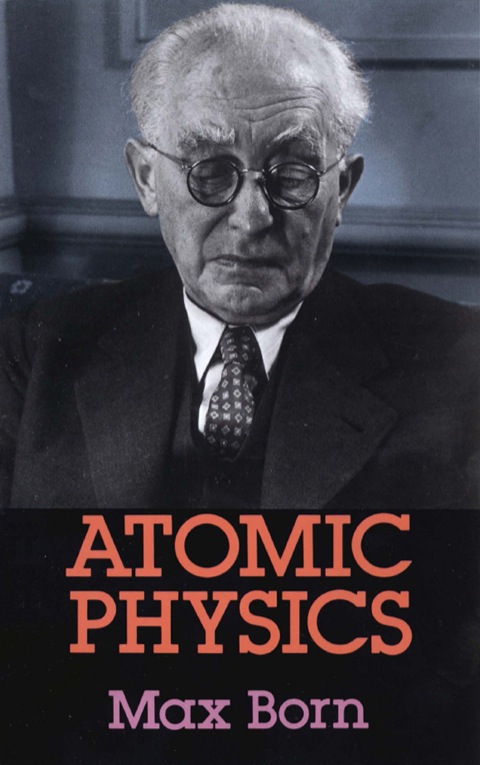Description
Efnisyfirlit
- Cover
- Title Page
- Copyright Page
- Dedication
- Preface
- Preface to Eight Edition
- Contents
- Chapter I Kinetic Theoey of Gases
- 1. Atomic Theory in Chemistry
- 2. Fundamental Assumptions of the Kinetic Theory of Gases
- 3. Calculation of the Pressure of a Gas
- 4. Temperature of a Gas
- 5. Specific Heat
- 6. Law of Distribution of Energy and Velocity
- 7. Free Path
- 8. Determination of Avogadro’s Number
- Chapter II Elementary Particles
- 1. Conduction of Electricity in Rarefied Gases
- 2. Canal Rays and Anode Rays (Positive Rays)
- 3. X-rays
- 4. Radiations from Radioactive Substances
- 5. Prout’s Hypothesis, Isotopy, the Proton
- 6. The Neutron
- 7. Cosmic Rays. Positrons
- 8. Mesons and Nuclear Forces
- Chapter III The Nuclear Atom
- 1. Lorentz’s Electron Theory
- 2. The Theorem of the Inertia of Energy
- 3. Investigation of Atomic Structure by Scattering Experiments
- 4. Mass Defect and Nuclear Binding Energy. The Neutrino
- 5. Heavy Hydrogen and Heavy Water
- 6. Nuclear Reactions and Radioactive Decay
- Chapter IV Wave-Corpuscles
- 1. Wave Theory of Light. Interference and Diffraction
- 2. Light Quanta
- 3. Quantum Theory of the Atom
- 4. Compton Effect
- 5. Wave Nature of Matter. De Broglie’s Theory
- 6. Experimental Demonstration of Matter Waves
- 7. The Contradiction between the Wave Theory and the Corpuscular Theory, and its Removal
- Chapter V Atomic Structure and Spectral Lines
- 1. The Bohr Atom; Stationary Orbits for Simply Periodic Motions
- 2. Quantum Conditions for Simply and Multiply Periodic Motions
- 3. Matrix Mechanics
- 4. Wave Mechanics
- 5. Angular Momentum in Wave Mechanics
- 6. Parity
- 7. The Statistical Interpretation of Wave Mechanics
- 8. Emission and Absorption of Radiation
- Chapter VI Spin of The Electron and Pauli’s Principle
- 1. Alkali Doublets and the Spinning Electron
- 2. The Anomalous Zeeman Effect
- 3. The Hydrogen Atom and X-ray Terms
- 4. The Helium Atom
- 5. Pauli’s Exclusion Principle
- 6. The Periodic System. Closed Shells
- 7. Magnetism
- 8. Wave Theory of the Spin Electron
- 9. Density of the Electronic Cloud
- Chapter VII Quantum Statistics
- 1. Heat Radiation and Planck’s Law
- 2. Specific Heat of Solids and of Polyatomic Gases
- 3. Quantisation of Black Body Radiation
- 4. Bose-Einstein Statistics of Light Quanta
- 5. Einstein’s Theory of Gas Degeneration
- 6. Fermi-Dirac Statistics
- 7. Electron Theory of Metals. Energy Distribution
- 8. Thermionic and Photoelectric Effect in Metals
- 9. Magnetism of the Electron Gas
- 10. Electrical and Thermal Conductivity. Thermoelectricity
- Chapter VIII Molecular Structure
- 1. Molecular Properties as an Expression of the Distribution of Charge in the Electronic Cloud
- 2. Experimental Determination of the Molecular Constants
- 3. Band Spectra and the Raman Effect
- 4. Chemical Binding. Classification of Types of Binding
- 5. Theory of Heteropolar Ionic Binding
- 6. Theory of Co-valency Binding
- 7. Theory of van der Waals Forces and other Types of Binding
- Chapter IX Quantum Theory of Solids
- 1. Introduction
- 2. Modes of Lattice Vibration
- 3. Quantisation of the Lattice Vibrations
- 4. Inelastic Scattering of Neutrons
- 5. The Mössbauer Effect
- 6. Electrons in a Periodic Lattice Band
- 7. Metals and Insulators
- 8. Metals
- 9. Superconductivity
- 10. Ferromagnetism
- 11. Insulators and Semiconductors
- Chapter X Nuclear Physics
- 1. The Size of the Nucleus and α-Decay
- 2. Angular Momentum and Magnetic Moment
- 3. The Deuteron and Nuclear Forces
- 4. Nuclear Structure and Nuclear Saturation
- 5. The Nuclear Shell Model
- 6. The Nuclear Collective Model
- 7. β-Decay and K-Capture
- 8. Nuclear Electromagnetic Interactions
- 9. The Drop Model, Nuclear Reactions and Fission
- Conclusion by M. Born
- Appendices
- I. Evaluation of Some integrals Connected with the Kinetic Theory of Gases
- II. Heat Conduction, Viscosity, and Diffusion
- III. Van der Waals’ Equation of State
- IV. The Mean Square Deviation
- V. Theory of Relativity
- VI. Electron Theory
- VII. The Theorem of the Inertia of Energy
- VIII. Calculation of the Coefficient of Scattering for Radiation by a Free Particle
- IX. Rutherford’s Scattering Formula for α-rays
- X. The Compton Effect
- XI. Phase Velocity and Group Velocity
- XII. Elementary Derivation of Heisenberg’s Uncertainty Relation
- XIII. Hamiltonian Theory and Action Variables
- XIV. Quantisation of the Elliptic Orbits in Bohr’s Theory
- XV. The Oscillator according to Matrix Mechanics
- XVI. The Oscillator according to Wave Mechanics
- XVII. The Vibrations of a Circular Membrane
- XVIII. Solution of Schrödinger’s Equation for the Kepler (Central Force) Problem
- XIX. The Orbital Angular Momentum
- XX. Deduction of Rutherford’s Scattering Formula by Wave Mechanics
- XXI. Deduction of the Selection Rules for Electric Dipole Radiation
- XXII. Anomalous Zeeman Effect of the D Lines of Sodium
- XXIII. Enumeration of the Terms in the Case of Two p-Electrons
- XXIV. Atomic Form Factor
- XXV. The Formalism of Quantum Mechanics
- XXVI. General Proof of the Uncertainty Relation
- XXVII. Transition Probabilities
- XXVIII. Quantum Theory of Emission of Radiation
- XXIX. The Electrostatic Energy of Nuclei
- XXX. Theory of α-Disintegration
- XXXI. The Ground State of the Deuteron
- XXXII. Meson Theory
- XXXIII. The Stefan-Boltzmann Law and Wien’s Displacement Law
- XXXIV. Absorption by an Oscillator
- XXXV. Temperature and Entropy in Quantum Statistics
- XXXVI. Thermionic Emission of Electrons
- XXXVII. Temperature Variation of Paramagnetism
- XXXVIII. Theory of Co-valency Binding
- XXXIX. Time-independent Perturbation Theory for Non-degenerate States
- XL. Theory of the van der Waals Forces
- XLI. The Modes of Vibration of a Linear Monatomic Chain
- Bibliography
- Index






Reviews
There are no reviews yet.